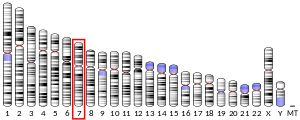Biliverdin reductase A is a protein that in humans is encoded by the BLVRA gene.[5][6]
| biliverdin reductase A | |||||||||
|---|---|---|---|---|---|---|---|---|---|
 Biliverdin reductase A dimer, Human | |||||||||
| Identifiers | |||||||||
| EC no. | 1.3.1.24 | ||||||||
| Databases | |||||||||
| IntEnz | IntEnz view | ||||||||
| BRENDA | BRENDA entry | ||||||||
| ExPASy | NiceZyme view | ||||||||
| KEGG | KEGG entry | ||||||||
| MetaCyc | metabolic pathway | ||||||||
| PRIAM | profile | ||||||||
| PDB structures | RCSB PDB PDBe PDBsum | ||||||||
| |||||||||
| BLVRA | |||||||||||||||||||||||||||||||||||||||||||||||||||
|---|---|---|---|---|---|---|---|---|---|---|---|---|---|---|---|---|---|---|---|---|---|---|---|---|---|---|---|---|---|---|---|---|---|---|---|---|---|---|---|---|---|---|---|---|---|---|---|---|---|---|---|
| |||||||||||||||||||||||||||||||||||||||||||||||||||
| Identifiers | |||||||||||||||||||||||||||||||||||||||||||||||||||
| Aliases | BLVRA, BLVR, BVR, BVRA, biliverdin reductase A | ||||||||||||||||||||||||||||||||||||||||||||||||||
| External IDs | OMIM: 109750; MGI: 88170; HomoloGene: 572; GeneCards: BLVRA; OMA:BLVRA - orthologs | ||||||||||||||||||||||||||||||||||||||||||||||||||
| |||||||||||||||||||||||||||||||||||||||||||||||||||
| |||||||||||||||||||||||||||||||||||||||||||||||||||
| |||||||||||||||||||||||||||||||||||||||||||||||||||
| |||||||||||||||||||||||||||||||||||||||||||||||||||
| |||||||||||||||||||||||||||||||||||||||||||||||||||
| Wikidata | |||||||||||||||||||||||||||||||||||||||||||||||||||
| |||||||||||||||||||||||||||||||||||||||||||||||||||
Function
editThe protein encoded by this gene belongs to the biliverdin reductase family, members of which catalyze the conversion of biliverdin to bilirubin in the presence of NADPH or NADH.[5]
Clinical significance
editMutations in this gene are associated with hyperbiliverdinemia.[5]
References
edit- ^ a b c GRCh38: Ensembl release 89: ENSG00000106605 – Ensembl, May 2017
- ^ a b c GRCm38: Ensembl release 89: ENSMUSG00000001999 – Ensembl, May 2017
- ^ "Human PubMed Reference:". National Center for Biotechnology Information, U.S. National Library of Medicine.
- ^ "Mouse PubMed Reference:". National Center for Biotechnology Information, U.S. National Library of Medicine.
- ^ a b c "Entrez Gene: Biliverdin reductase A".
- ^ Schomburg D, Schomburg I, Chang A (2004). Class 1 Oxidoreductases V. Springer Handbook of Enzymes. Vol. 21 (2nd ed.). Springer Science & Business Media. pp. 140–. ISBN 978-3-540-22515-7.
External links
edit- Human BLVRA genome location and BLVRA gene details page in the UCSC Genome Browser.
- PDBe-KB provides an overview of all the structure information available in the PDB for Human Biliverdin reductase A
This article incorporates text from the United States National Library of Medicine, which is in the public domain.



